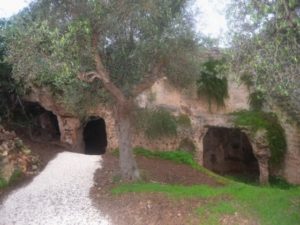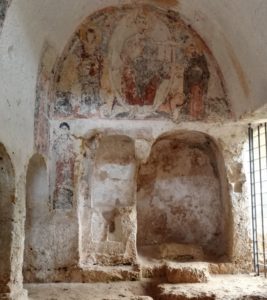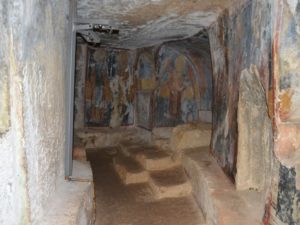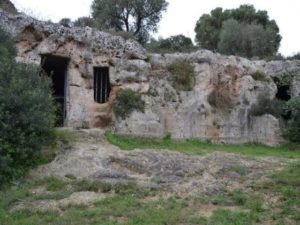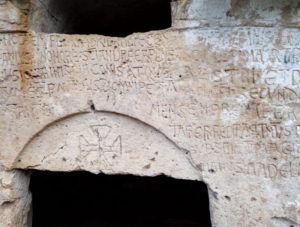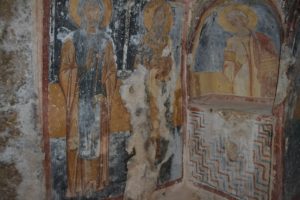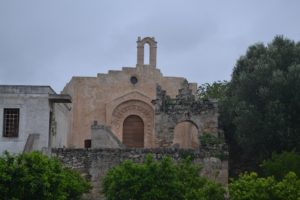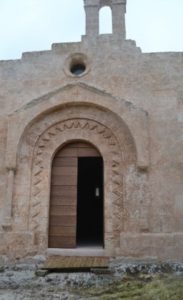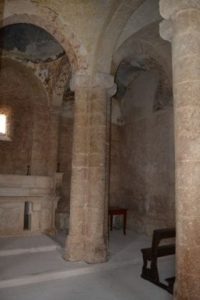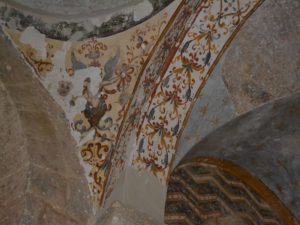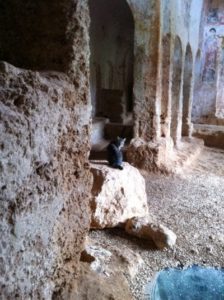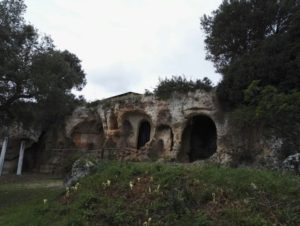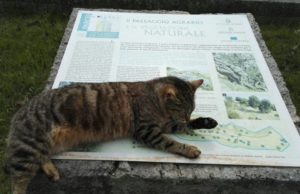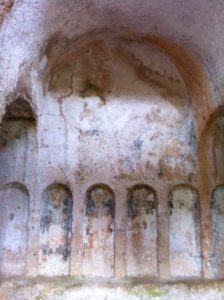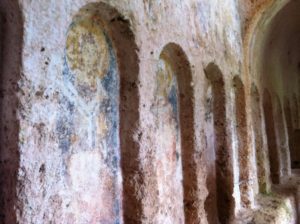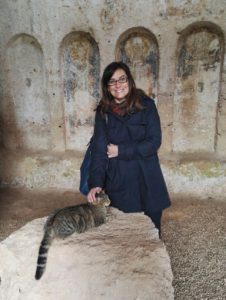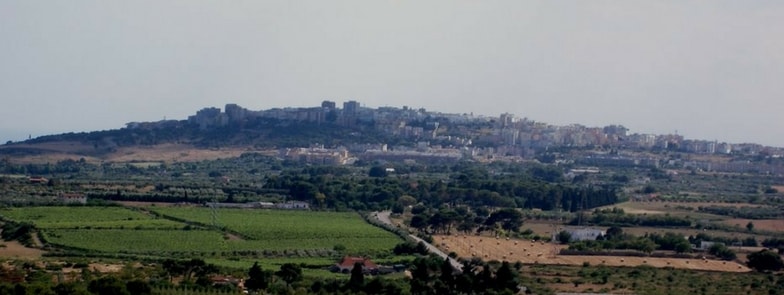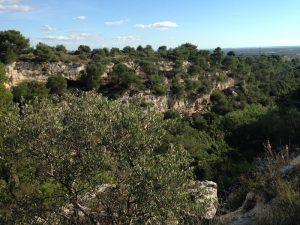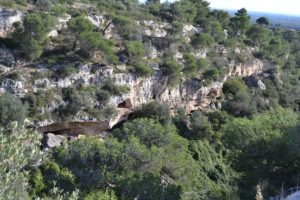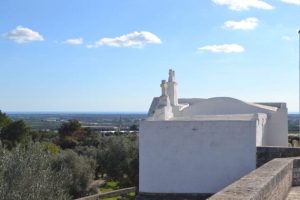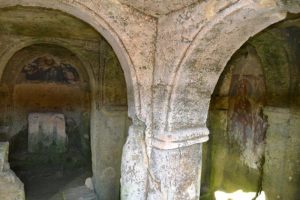Il triangolo d’oro – parte seconda.
è un articolo di Città Meridiane – cittameridiane.it
Gli insediamenti rupestri tra Monopoli e Fasano.
Tornando a Lama d’Antico, era sicuramente uno degli insediamenti più grandi e abitati dove non mancava nulla: abitazioni scavate nella roccia con camere e cisterne per la raccolta dell’acqua piovana, ricoveri per gli animali, trappeti per la molitura delle olive, spazi per ospitare ambienti di lavoro e la magnifica chiesa, completamente affrescata.
Si tratta di una vera cattedrale con cupola centrale, una delle chiese rupestri più grandi di tutta la Puglia. Al suo interno si entra attraverso un monumentale ingresso che immette in un ambiente distinto in due navate absidate. Originariamente la chiesa era completamente affrescata ma oggi gran parte delle pitture è sbiadita. Si scorge ancora sulla lunetta dell’abside centrale una Maiestas Domini e sulla parete sinistra la figura dell’apostolo Giovanni Evangelista che benedice alla greca.
Sempre nel Parco Archeologico di Lama d’Antico, è compresa la chiesa di San Lorenzo in cui si conserva un’iconostasi particolare e fortemente legata alle funzioni religiose di rito greco-ortodosso. Ed è proprio qui che sono raffigurati i due Santi Padri: San Basilio della chiesa ortodossa e San Benedetto di quella latina. Notevoli le altre pitture murarie che sono dipinte con abilità pittorica e accuratezza per uso dei colori e i tratti intensamente espressivi dei visi che fanno di questa chiesa uno degli esempi più affascinanti dell’arte bizantina nelle lame di Fasano.
Tra i casali più interessanti c’è quello di Sant’Andrea e San Procopio, in territorio di Monopoli, a cui si accede dalla Masseria Rosati. Nella lama dell’Assunta si riconoscono numerose case-grotte, un mulino, un frantoio e altri locali per uso artigianale e la chiesa cripta con una facciata scolpita con molta cura e maestria. Molto interessante risulta la lunga iscrizione incisa in lingua latina sopra la lunetta che data la chiesa al 1073.
Anche il bema di questa chiesa è insolito nell’area della zona in quanto presenta una doppia separazione in pietra alta 50 centimetri con due aperture in direzione delle absidi. Riguardo le pitture murali è ancora visibile un San Giorgio a cavallo, il santo delle crociate. Nei dipinti di San Procopio si percepisce il passaggio dalla tradizione bizantina a una nuova corrente pittorica di ispirazione occidentale di matrice normanno-sveva.
Canoni già angioini sono presenti nella raffigurazione di Sant’Eligio dipinto con colori vivaci e i simboli attribuitigli dalla tradizione quale patrono dei maniscalchi: due chiodi, un martello, una tenaglia, un ferro di cavallo e un piccolo mulo nero.
Il nostro giro si conclude nella lama nei pressi della Masseria Ottava Grande (Strada Provinciale 10, Contrada Ottava, Montalbano di Fasano – tel. +39 320 6844285 – www.masseriaottavagrande.it – info@masseriaottavagrande.it), un burrone dalle alti pareti rocciose con un sistema di ampie grotte di cui alcune adibite a trappeto costituito da tre grandi ambienti e da altri piccoli vani e dotato di macina funzionante fino agli anni ’50. Di fronte alla masseria, il più antico esempio con torre fortificata, la chiesa di San Pietro del XII secolo che – come ci spiega l’archeologa Roberta Mussardo, che nel frattempo si è aggiunta a noi, – rappresenta un tipico esempio di edificio a cupole in asse, il cui schema si diffuse ampiamente in Puglia dall’VIII al XIII secolo.
La chiesa è un piccolo gioiello in cui la semplice architettura esterna non fa presagire l’ampiezza e la ricchezza interne.
Imponenti i pilastri che si protendono verso l’alto e sostengono gli archi delle tre cupole realizzate con volte a crociera.
Successivamente, San Pietro è stata decorata con eleganti motivi floreali.
Da sottolineare che l’edificio è tornato a essere fruibile grazie alla famiglia Indelli che ne è proprietaria, dopo un lungo periodo di incuria. Insieme alla chiesa è stata recuperata anche la casa rurale che si trova nella lama accanto alla quale si distinguono un’antica foggia e un profumato agrumeto chiuso da alte mura rivestite in cocciopesto e dotato di canalette in pietra per convogliare l’acqua della cisterna.
leggi anche IL TRIANGOLO D’ORO – PARTE PRIMA

